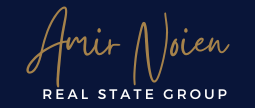
Guide to Finding and Getting a Mortgage
- Mortgage
- Qualifying for a Mortgage
- Types of Mortgages
- Mortgage Glossary
- Credit Scores
- Calculate Your Mortgage Possibilities
Mortgage
When purchasing a real estate property, unless paying cash, consumers typically finance all or a portion of the purchase price. This means borrowing money from a financial institution to buy a home, using the intended home of purchase as collateral for the loan.
Mortgage payments include the principal (the amount borrowed), and the interested (the amount charged for borrowing the money). Payments can be made once a month, bi-weekly, or weekly, depending on availability from the lender. A typical mortgage is for an amount that does not go over 75% of the appraised value of the property or the purchase price, whichever is lower. A minimum 25% of the purchase price is required for the down payment. However, with a high-ratio mortgage you may pay less than 25% of the cost of the home as a down payment.
Home mortgages are available from several types of lenders: banks, mortgage companies, trust companies and credit unions. Different mortgage lenders may quote you different prices, so you should contact several lenders to make sure you’re getting the best price. You may also get a home loan through a mortgage broker. Brokers arrange financial transactions rather than lending money directly; in other words, they find a lender for you. A broker’s access to several lenders can mean a wider selection of loan products and terms from which you can choose.
It will normally only take a few days to receive approval for a mortgage, however, it is often recommended to get pre-approval for a mortgage. When you put in your offer to purchase, this is almost always on the condition of getting mortgage approval as this assures everyone involved that you are able to pay back the mortgage without defaulting.
Qualifying for a Mortgage
The process involves submitting your financial paperwork to a potential lender and receiving approval for a pre-determined mortgage amount. The pre-approval agreement may also guarantee an interest rate for a mortgage taken out during the 60 to 90 day pre-approval term. The mortgage lender will inquire about such things as your marital status, number of dependents, age, current employment (including how long you have worked there), salary, as well as other sources of income. They will ask for a list of your assets (i.e. vehicles, cash, etc.) and liabilities (i.e. credit card balances, car loans, etc.). Lenders also do a credit check to find out if you pay your bills on time.
To qualify for a mortgage, the applicant’s gross annual income, credit history, and assets and liabilities (past or present) all impact the final outcome. There are a variety of online mortgage calculators available that can help you to ascertain the amount of mortgage appropriate to your financial situation.
Types of Mortgages
Fixed Term Mortgage
For fixed-rate mortgages the interest rate is established for the term of the mortgage so that the monthly payment of principal and interest is unchanged throughout the term. Irrespective of whether rates move up or down, you understand precisely how much your payments will be thus making personal budgeting easier. When rates are low, it may be better to take a longer term, fixed-rate mortgage for protection from upward fluctuations in interest rates.
Open Mortgage
With an open mortgage you have the ability to repay the mortgage at any time without penalty. The availability options are reduced to shorter terms (6 months or 1 year only), and the interest rate is higher than closed mortgages as much as 1%, or more. This type of mortgage is typically favoured by those thinking of selling their home, or if they are going to pay off the entire mortgage (i.e. through the sale of another property, an inheritance, etc.).
Closed Mortgage
Closed mortgages grant the security of fixed payments for terms between 6 months to 10 years. The interest rates are significantly less than open mortgages. They can deliver as much as 20% prepayment of the original principal, which is more than the majority of what people prepay on a yearly basis. However, if you want to pay off the entire mortgage before the maturity, there will be a penalty charge for breaking that mortgage. This penalty is customarily three months interest, or the interest rate differential.
The Adjustable Rate Mortgage (A.R.M.)
A mortgage with a lot of flexibility is the Adjustable Rate Mortgage (A.R.M.), particularly chosen when interest rates are going down. The rate is based on prime minus 0.375% and can be changed monthly to reflect the current interest rates. During the first three months of the mortgage, a sizable rebate on the rate is given as a welcoming offer. The mortgage payments usually remain consistent, but the ratio between principal and interest fluctuates. When interest rates go down, you pay less interest and more principal. If rates increase, you pay more interest and less principal. If rates rise substantially, the initial payment may not cover both the interest and principal. Any portion not paid is still owed, or you may be asked to increase your monthly payment. This mortgage is fully adaptable at any time without any penalties to you (providing that you choose a three year term or greater), and offers a 20% prepayment privilege at any time throughout the year.
Equity Mortgage
Equity mortgages are evaluated based on the equity of the home (market value minus the mortgage amount). You can receive as much as 80% of the purchase price or value of the property. These are generally offered to applicants that do not meet the normal income and/or credit qualifying mortgage guidelines (i.e. little or no income verification, self-employed, and/or less-than-perfect credit).
Multiple Term Mortgages
This type of mortgage provides the convenience of the lower rates of a short term mortgage and the security of a long term, in one mortgage. Your mortgage can be split in to as many as five parts, all having different terms, rates, and amortizations, but in one convenient monthly payment. However, you should be aware of any market changes with this mortgage. This type of mortgage is not for everyone, as the amount of time and stress involved is quite high.
The 6 Month Convertible Mortgage
When interest rates go down, or you suspect that they will in the approaching future, a 6 month convertible mortgage gives you a temporary commitment at fixed payments, with the bonus ability that while within the term, the mortgage is fully adaptable to a longer term from 1 year to 10 years. When the 6 month period is over the mortgage becomes fully open, and it can be renewed with the current lender or moved to another lender. This type of mortgage is offered at most financial institutions, but each lender’s terms are different.
All-Inclusive-Mortgage (A.I.M.)
This mortgage takes care of everything automatically for you. For Purchases, it includes: Solicitor’s legal fees and standard disbursements to close the purchase and mortgage; Title transfer; Title Insurance from LandCanada for the clients; CMHC application fee or Appraisal fee; 1% Cash-Back to cover Land Transfer Tax; Registration of Deed and Mortgage. For Refinances, it includes: Legal fees and standard disbursements to prepare and close the mortgage; Title Insurance from LandCanada; CMHC application fee or appraisal fee; 1% Cash-Back; Registration of new first mortgage; Registration of discharge of existing first and second mortgage. The minimum available is a 5 years term.
Secured Lines of Credit
This allows you to use the equity in your home to purchase investments (where interest costs would be deductible against the earned income), renovate your home, buy a car, etc., with rates as low as prime. Up to 75% of the purchase price or value of the home can be arranged. It is very easy to access the available credit, with many lenders also providing an issued credit and/or debit card. The money does not have to be drawn until you need it, and you can pay off your balance at any time or make monthly payments. As the balance is paid down, there is much more available credit (revolving credit).As it is a secured product, the conventional legal and appraisal fees are applicable. Now and then, there are promotions where a lender will cover part or all of these costs. You should be cautioned that although these lines are very flexible and versatile it can be extremely tempting to use it for unnecessary purchases.
Mortgage Glossary
Fees
The costs banks and mortgage companies charge usually include the following:
- Application fee – the money paid to the lender for processing the mortgage documents
- Insurance – homeowner’s coverage for fire and casualty to the home
- Origination fee – A fee, often a percentage of the total principal of a loan, charged by a lender to a borrower on initiation of the loan
- Closing costs – The numerous expenses (over and above the price of the property) that buyers and sellers normally incur to complete a real estate transaction.
- Interest – the cost of using the money, based on a percentage of the amount borrowed.
Every lender or broker should be able to give you an estimate of their fees. Many of these fees are negotiable. Some fees are paid when you apply for a loan, and others are paid at closing. In some cases, you can borrow the money needed to pay these fees, but doing so will increase your loan amount and total costs. “No cost” loans are sometimes available, but they usually involve higher rates.
Down Payment
The amount of money a buyer needs to pay down on a home is one of the most misunderstood concepts in home buying. Some people think they need to make a down payment of 50 percent of the home’s price, but most loans are based on a 20 percent down payment. There are mortgage options now available that only require a down payment of 5% or less of the purchase price. If a 20 percent down payment is not made, lenders usually require the home buyer to purchase private mortgage insurance (PMI) to protect the lender in case the home buyer fails to pay. Ask about the lender’s requirements for a down payment, including what you need to do to verify that funds for your down payment are available. Make sure to ask if PMI is required for your loan, and also find out what the total cost of the insurance will be.
1. Amortization
Amortization is the paying off of the mortgage debt in regular installments over a period of time, i.e. 30 years. If you pay the same monthly amount according to the terms of your note, then your debt will be paid in the exact number of years outlined for you. You may, however, make additional monthly payments which are applied directly to the principal amount thus reducing your mortgage term substantially. Understand negative amortization. Some home loans offer attractive monthly mortgage payments but at times those low payments don’t cover the interest portion of the loan. When that happens, part of the principal amount is deducted, resulting in what lenders call “negative amortization.” Simply put, it means you are losing equity in your home.
2. Interest Rate
The interest rate is the monthly effective rate paid on borrowed money, and is expressed as a percentage of the sum borrowed. A lower interest rate allows you to borrow more money than a high rate with the same monthly payment. Interest rates can fluctuate as you shop for a loan, so ask lenders if they offer a rate “lock-in” which guarantees a specific interest rate for a certain period of time. Remember that a lender must disclose the Annual Percentage Rate (APR) of a loan to you. The APR shows the cost of a mortgage loan by expressing it in terms of a yearly interest rate. It is generally higher than the interest rate because it also includes the cost of points, mortgage and other fees included in the loan. If interest rates drop significantly, you may want to investigate refinancing. Most experts agree that if you plan to be in your house for at least 18 months and you can get a rate 2% less than your current one, refinancing is smart. Refinancing may, however, involve paying many of the same fees paid at the original closing, plus origination and application fees.
3. Discount points
Discount points are prepaid interest and allow you to buy down your interest rate. One discount point equals 1% of the total loan amount. Generally, for each point paid on a 30-year mortgage, the interest rate is reduced by 1/8 (or.125) of a percentage point. When shopping for loans ask lenders for an interest rate with 0 points and then see how much the rate decreases with each point paid. Compare the monthly difference in payments with the total discount points you are willing to pay, and see how many months you need to stay in the home to recoup your money. Points are tax deductible when you purchase a home and you may be able to negotiate for the seller to pay for some of them.
4. Escrow Account
Established by your lender, an escrow account is set up to manage monthly contributions to cover annual charges for homeowner’s insurance, mortgage insurance and property taxes. The borrower contributes 1/12 of the annual costs monthly so that the lender will have sufficient money to pay for the taxes and insurances. Escrow accounts are a good idea because they assure money will always be available for these payments.
CREDIT SCORES
The credit score is calculated by a statistical process and provides a guideline for lenders to extend credit (and if so, how much) to a borrower. Mortgage companies, banks, and insurance companies determine the interest rate they will charge based on the borrowers credit score. The credit scoring process encompasses both your pay history and the amount of credit you currently have. The credit score is a substantial portion of the entire credit report.
Low Credit Scores will result in higher payments on loans, credit cards, and insurance.
The credit score is sometimes called the FICO Score, which is an acronym for the creators of the FICO score, F air I saac C redit O rganization
Below is a table showing different score ranges
|
Score Range |
Rating |
| 780+ | Perfect |
| 720 – 780 | Excellent |
| 675 – 720 | Average |
| 620 – 690 | Fair |
| Below 620 | Low |
Don’t assume that minor credit problems or difficulties stemming from unique circumstances, such as illness or temporary loss of income, will limit your loan choices to only high-cost lenders. If your credit report contains negative information that is accurate, but there are good reasons for trusting you to repay a loan, be sure to explain your situation to the lender or broker. If your credit problems cannot be explained, you will probably have to pay more than borrowers who have good credit histories. Ask how your credit history affects the price of your loan and what you would need to do to get a better price. Lenders now offer several affordable mortgage options, which can help first-time homebuyers, overcome obstacles that made purchasing a home difficult in the past. Lenders may now be able to help borrowers who don’t have a lot of money saved for the down payment and closing costs, have no or a poor credit history, have quite a bit of long-term debt, or have experienced income irregularities. There are companies who specialize in consumer credit repair.




Leave a Reply